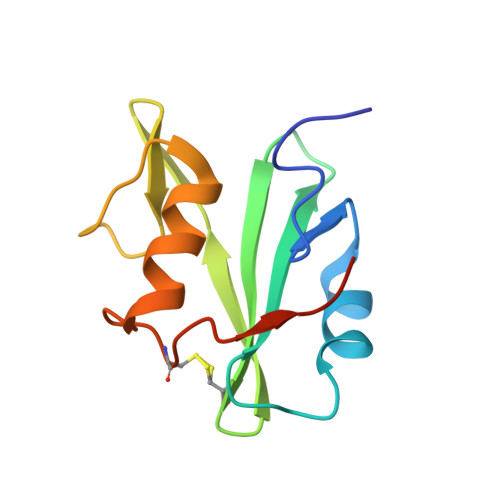Combining biophysical methods to analyze the disulfide bond in SH2 domain of C-terminal Src kinase.
Liu, D., Cowburn, D.(2016) Biophys Rep 2: 33-43
- PubMed: 27819029
- DOI: https://doi.org/10.1007/s41048-016-0025-4
- Primary Citation of Related Structures:
3EAC, 3EAZ - PubMed Abstract:
The Src Homology 2 (SH2) domain is a structurally conserved protein domain that typically binds to a phosphorylated tyrosine in a peptide motif from the target protein. The SH2 domain of C-terminal Src kinase (Csk) contains a single disulfide bond, which is unusual for most SH2 domains. Although the global motion of SH2 domain regulates Csk function, little is known about the relationship between the disulfide bond and binding of the ligand. In this study, we combined X-ray crystallography, solution NMR, and other biophysical methods to reveal the interaction network in Csk. Denaturation studies have shown that disulfide bond contributes significantly to the stability of SH2 domain, and crystal structures of the oxidized and C122S mutant showed minor conformational changes. We further investigated the binding of SH2 domain to a phosphorylated peptide from Csk-binding protein upon reduction and oxidation using both NMR and fluorescence approaches. This work employed NMR, X-ray cryptography, and other biophysical methods to study a disulfide bond in Csk SH2 domain. In addition, this work provides in-depth understanding of the structural dynamics of Csk SH2 domain.
- iHuman Institute, ShanghaiTech University, Shanghai, 201203 China ; Department of Biochemistry, Albert Einstein College of Medicine, Bronx, NY 10461 USA.
Organizational Affiliation:
















